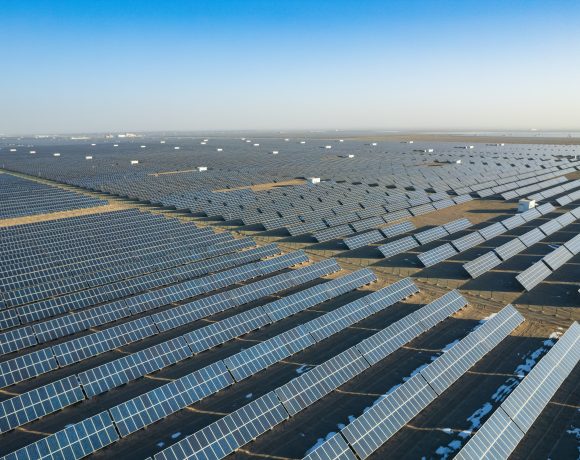- India faces serious challenges that could pose a threat to future progress in its energy sector. The political economy of coal, the insolvency of distribution companies and the resulting strain on the cash flow of the overall power sector, grid inefficiencies the myriad of tariff categories and cross-subsidy schemes are all cited frequently.
- Industry trends point towards greater deployment of energy storage systems in India – 1) utility-scale renewable energy combined with storage can be cost-competitive with thermal power, 2) alternatives to Lithium-Ion batteries, with longer storage capacity such as different battery chemistries or mechanical or thermal solutions, 3) reusing EV batteries that are no longer fit for purpose in cars, 4) scaling thermal storage systems, especially for cooling purposes, as an alternative to storing electricity in batteries
The ‘Energy Storage Market India‘ report was written by Peter Freudenstein during his residency at swissnex India as part of the Mercator Fellowship on International Affairs program. The following article is a summation of the key findings of the report.
Much ink has spilled about India’s energy transition and its high potential for renewable energy generation in recent years. For some, India provides unprecedented opportunities to scale solar and wind power, hailing it as one of the forerunners of a world heading towards a sustainable future. IRENA for one puts the technical potential of utility-scale solar photovoltaics for India in 2030 at 750 GW. And the Indian government, having realized both the risks of an overreliance on fossil fuels and the benefits of greater renewable energy penetration has put forth a goal of an annual generation of 450GW renewable energy by 2030.
At the same time, India faces serious challenges that could pose a threat to future progress in its energy sector. The political economy of coal, the insolvency of distribution companies and the resulting strain on the cash flow of the overall power sector, grid inefficiencies and the fact that 1 out of 5 electrons gets lost somewhere between generation and consumption, or the myriad of tariff categories and cross-subsidy schemes are all cited frequently. This has prompted some experts to say that India is at a crossroads. Failing to address these issues will have negative long-term consequences on climate change and public health, but also economic growth.
However, while these ultimately require a political solution on a national level, there is one basic challenge that India, and in fact every country transitioning towards a renewable future, must face: the intermittency of renewables.
As the old adage goes, the sun doesn’t always shine, and the wind doesn’t always blow. The issue of intermittency of renewable energy sources was long used as a counterargument to greater expansion of renewable energy into the grid. Large load movements put an immense amount of strain on electricity grids. Particularly as the share of renewable energy grows in India, the inevitable mismatch of demand and supply during peak times will become more pronounced. Depending on the country and local variables, the critical share lies somewhere between 20–25% of renewable energy in the overall grid. At this point, the grid is no longer able to cope with the variability of renewables using the inherent flexibility of the current system.
How is India to solve this? Reducing renewable energy in the grid is simply not an option and knowing that energy use and economic growth go hand in hand, neither is reducing the total energy consumption of India. The only alternative we are left with is to increase the flexibility of the overall system. In fact, it is the only way that renewable energy will ever become the primary source of energy. Mere capacity additions might make for eye-catching headlines, but they don’t matter if the grid is not able to incorporate them.
Luckily, there exist already various broad categories of solutions that aim to provide overall flexibility to the system. From developing more constant renewable energy sources like geothermal energy and expanding grid systems to demand response tools and improved load and generation forecasting, utilities and regulators across the world are exploring ways of improving their grids.
The most important factor, however, is arguably more and more diverse energy storage capacity. Energy storage allows for the balancing of the grid at grid-scale by storing excess energy during times of high renewables generation and the dispatch of energy during high demand. In addition, storage enables behind-the-meter systems like isolated grids and residential solar that in turn relieve the grid and provide system operation support. Separately, energy storage is key to the electrification of transportation, which as the grid is upgraded, can also add additional flexibility to the grid by vehicles acting as modular storage capacity. It is not surprising then, given India’s sheer size and future economic growth potential, that the IEA projects that India will require more battery storage capacity than any other country to achieve its energy transition.
In fact, some industry trends would point towards greater deployment of energy storage systems in India soon. First, recent tenders have proven that utility-scale renewable energy combined with storage can be cost-competitive with thermal power in India. Second, alternatives to Lithium-Ion batteries, with longer storage capacity such as different battery chemistries or mechanical or thermal solutions are being pursued in India too. Even somewhat more outlandish technologies like Energy Vault, a Swiss company using stacked concrete blocks and a crane to store energy, are setting up shop in India. This trend is particularly important, as you don’t want to rely solely on one theoretical silver bullet but instead, benefit from a diverse portfolio of storage technologies. Moreover, depending on the use case, some energy storage systems are more suitable than others to perform the energy-storing task at hand.
Third, not only are electric cars driving down battery costs substantially, there is increasing interest in exploring ways of reusing EV batteries that are no longer fit for purpose in cars, but still retaining 70-80% of their original storing capabilities. As a country limited in battery resources like India, but also eager to establish e-mobility, India would be a large benefactor of this trend. Fourth, it has been well established by now that cooling demand will be one of the main drivers of future energy demand. For India, which not only has average annual temperatures of around 25o Celsius and scorching hot pre-monsoon seasons, but also low household ownership of air conditioners at around 7%, this is particularly true. Though still a niche market, the industry is increasingly looking at scaling thermal storage systems, especially for cooling purposes, as an alternative to storing electricity in batteries. India seems to be a great fit to explore this energy storage solution further. Finally, India’s push for solar has so far been driven by utility-scale projects, compared to the USA or Germany where growth is spread more equally between distributed generation and large-scale PV projects. However, the government has come out with an ambitious rooftop solar target of 40GW by 2022 that signals the arrival of the prosumer in India, and with it, the substantial and necessary deployment of distributed energy storage systems like home batteries.
The jury is ultimately still out on whether India will be able to chart a path to a renewable future in the coming years. At the very least, however, by focusing on deploying more energy storage systems, pushing for policy frameworks supportive of the energy storage industry like amending the 2003 Electricity Act, or by fostering international cooperation and creating a more welcoming investment environment, India could lay the groundwork for hopefully achieving a swift and sustainable energy transition.






NO COMMENT